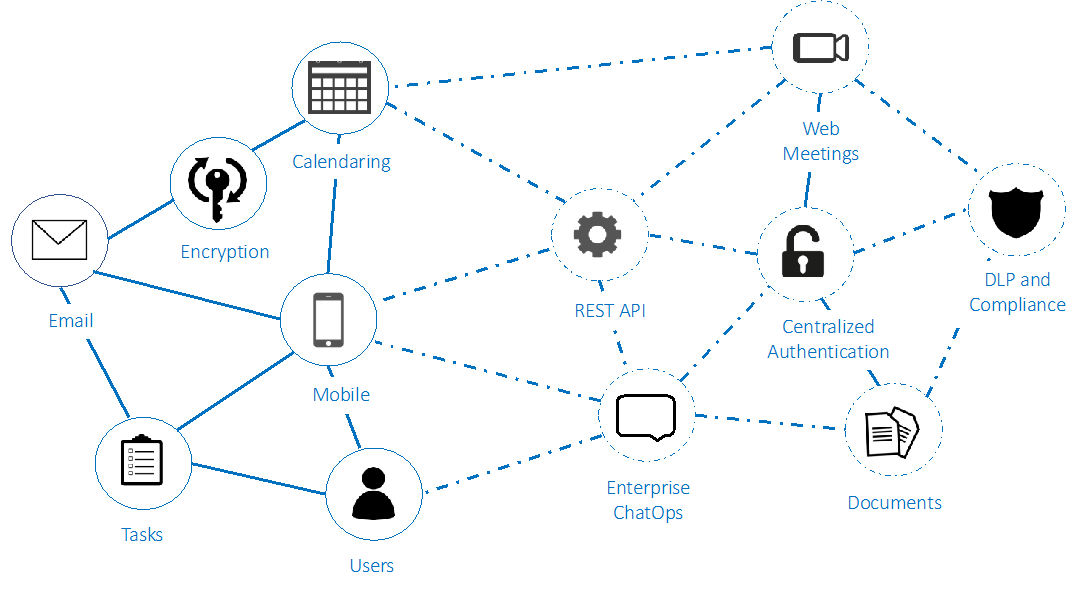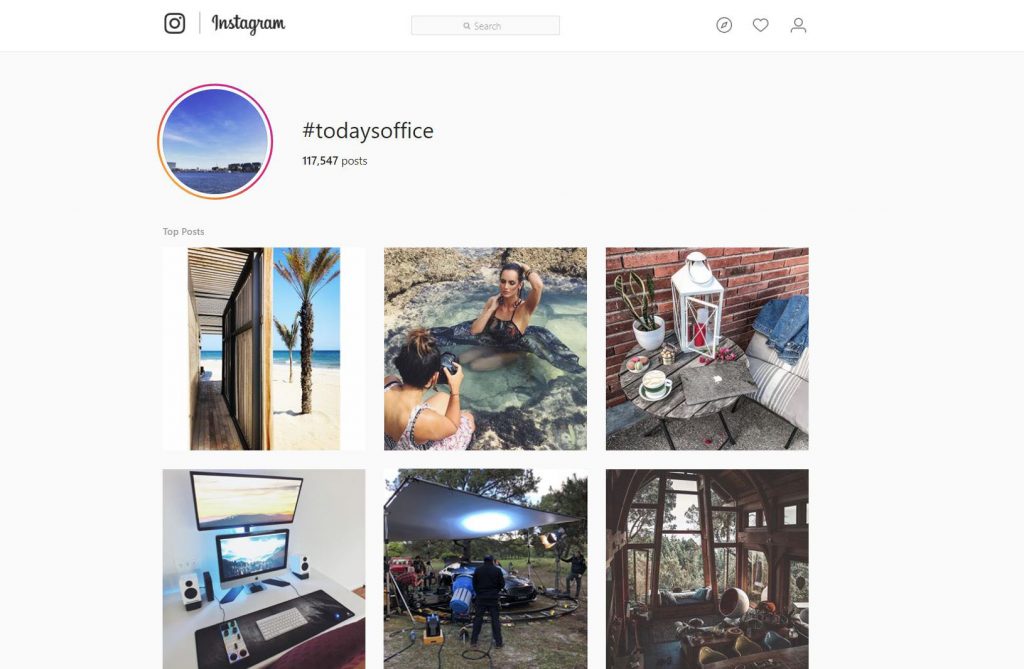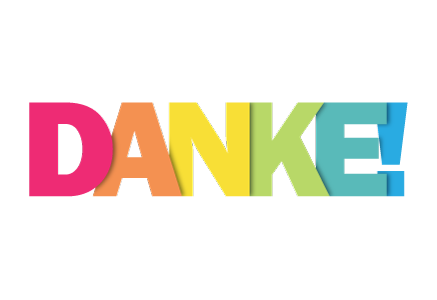As a result of the great influx of new technologies in our lives, the way we work together as a team has changed. And although a lot of these new technologies are really cool, for most companies, incorporating these tools into an existing work environment poses a great challenge. So how has modern-day teamwork changed? And how can you as a company adapt to these changes?
The Way We Communicate
Future Teamwork: The World Is Our Office
Yes, in today’s world we can work from wherever we want, whenever we want. Just look for the hashtag #todaysoffice on Instagram and you’ll find yourself scrolling through a long list of people working from exotic locations and hip coffee bars. But not only instafamous people work remotely, we all do. We work from our own homes, a client’s office or at an event venue. It does not matter. Thanks to technology, the world is our office.
Everything Connected
Have you ever thought about how many tools and devices you’re using on a single working day? This blog, for example, I wrote on my laptop computer in my office. I used my phone to make online edits in the same document during my commute from Delft to The Hague. I sent the blog for revision to my colleague via Mattermost and used my tablet to scroll through some emails on my couch at home. And that is just the tools I use to do my job.
In the meantime, I checked my personal email, posted on Instagram, shared an article on Twitter ‑ the same article I shared with my colleagues via WhatsApp – and saved some mouthwatering recipes in my notes. A few years ago, all of this wasn’t even possible, but nowadays we expect nothing less. We want to be connected. Always.
The Need To Be Safe
With the rise of software and technology, the need for data privacy and security also grows. People are slowly getting more aware of the risks that come with data sharing and are looking for ways to enjoy cool, new technologies without having to worry about their personal data. But also on a higher level security and privacy is high on the radar. By now, you most likely have had to deal with GDPR in one way or the other, but if not, you can read up on the background of GDPR here.
Choosing the Right Tools
For companies, all these developments together create great challenges. Because how do you deal with all these new and changing communication styles and needs? On the one hand, you want to give your employees enough choice to communicate and collaborate in a way they like best. On the other hand, you don’t want to overwhelm them, distracting them from the job they need to perform. How do you do all of this, while at the same time keeping your data safe?
The thing is, there is no silver bullet here, but there are some things that are important if you’re considering to introduce new communication technologies in your company.
Choice is Good…
For a long time already we’ve relied on good ol’ email. And email is still great. However, it does not facilitate all forms of communication and collaboration. Real-time communication, for example, is not possible with email, also for brainstorming email might not be the appropriate tool. So instead of email, many companies are now changing to real-time collaboration tools like Slack or Mattermost.
These tools, however, have their downsides too. As explained in this article on Medium, chat is great for making quick decisions and sharing urgent information, but it also limits thoughts to “one line-at-a-time”. With chat, you also risk being overwhelmed with information which can cause a lot of stress. If you’re interested, the article discusses the group chat topic further but the main point is that you should probably not limit your communication means to one tool.
…But Beware of Choice Overload

That being said, you also have to be careful not to overwhelm your employees with options. I recently spoke to an engineer who said was mildly stressed out every time he needed to contact a colleague because he did not know out of all these tools, which one to choose. Not good.
Then there’s stress caused by an overkill of interruptions. This research project funded by the Netherlands Organization of Scientific Research, for example, states that although “the use of data‐intensive communication technologies enhances ‘the quality, accuracy, and ease with which people can communicate over physical and temporal distances’”, it also leads to “interruption-related stress”.
So what should you do? Limit the number of tools available to communicate for example, so it’s clear which tool should be used for which purpose. Doing this, you also minimize the risk of dispersing important information across different channels. An additional, albeit more radical solution, could be to prevent communication after working hours like they’re doing in Germany and France (backed by new laws). At the time of writing a, no after-hours email law is also proposed in New York City.
Last but not least, instead of choosing the software suite that offers the most tools and features, think about what goals you and your company need to reach and what communication features you need to reach those goals. It’s the same with web analytics tools. You can measure practically everything, but do you need to measure everything? The answer is no. So define your needs, then select your tool.
Don’t Expect a Revolution
In January of this year, the Wave project retired. Wave was developed with the idea that human communications is not one-size-fits-all. The creators wanted to design a tool that allowed people to communicate in all imaginable ways possible, from one interface. Sounds great, doesn’t it? But Wave failed. Why? Primarily because people were not ready to switch to it. There was a clear need, but at the time of launch, for users, there were still too many obstacles to overcome.
Interoperability is Key
 So to make a successful transition to new communication and collaboration technologies, interoperability is key. Why? Because first of all, interoperability allows you to gradually move to new tools. You can leave one tool running and simply add another, removing the old one whenever you feel is the right time. This gives your employees the opportunity to continue working with existing tools while at the same time getting used to new tools. It also allows you to select the best software for each purpose. So you could choose a Linux backend, an SQL database, Kopano mail, Mattermost ChatOps and integrate with tools like MailChimp, WordPress or Mautic.
So to make a successful transition to new communication and collaboration technologies, interoperability is key. Why? Because first of all, interoperability allows you to gradually move to new tools. You can leave one tool running and simply add another, removing the old one whenever you feel is the right time. This gives your employees the opportunity to continue working with existing tools while at the same time getting used to new tools. It also allows you to select the best software for each purpose. So you could choose a Linux backend, an SQL database, Kopano mail, Mattermost ChatOps and integrate with tools like MailChimp, WordPress or Mautic.
Open Source as Enabler of Interoperability
When it comes to interoperability, open source software can be of use because it allows companies to build technologies that work together using software with a code base everyone has access to.
What makes interoperability even easier is APIs. To ensure Kopano software can easily work together with external applications, the Kopano team too is working on a (REST) API. In this way, Kopano continues to provide maximum interoperability, paving the way for new integrations and optimizations.
Keeping Your Data Safe
Ah yes, let’s not forget data privacy. Let’s say you’ve selected the perfect set of communication and collaboration tools for your team to work with. Not too many, not too few. Everything is all very interoperable and everybody is happy. Then the question remains: how do you keep the data transferred in and between these tools safe? The best advice we can give you here is, make sure the data is under your control. Don’t store your data somewhere on a public cloud but host it yourself or in a European cloud.
In Sum
The future of teamwork is bright. Thanks to new technological innovations, communication and collaboration are getting easier by the day. Integrating these new technologies in your work environment though is not so easy. Before you start, you need to make a lot of difficult choices. We cannot make these choices for you, but what we cannot stress enough is that when you’re introducing new communication technologies, don’t just think about the tools, but also think about the people that need to work with them.
Want to see WebApp in action?
In the live demo, you can try out email, calendar, files features, and more.






